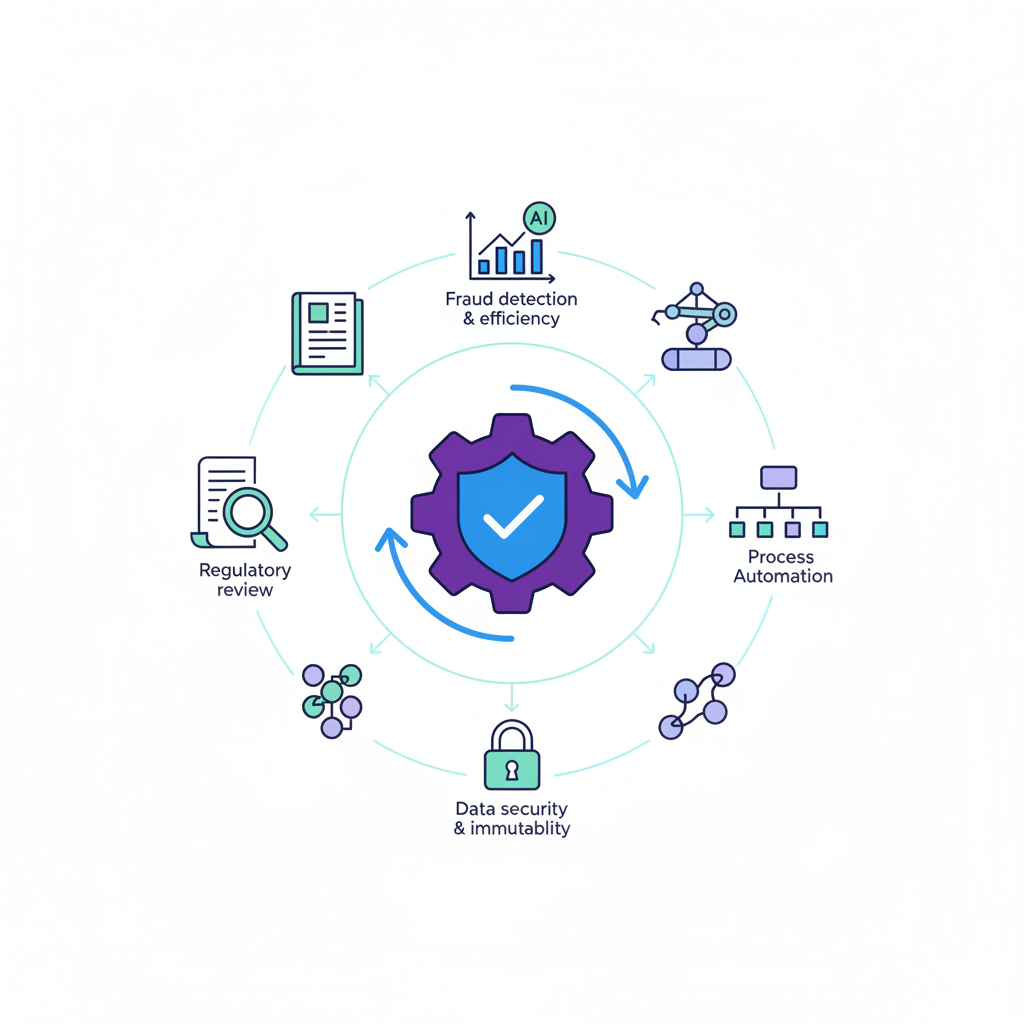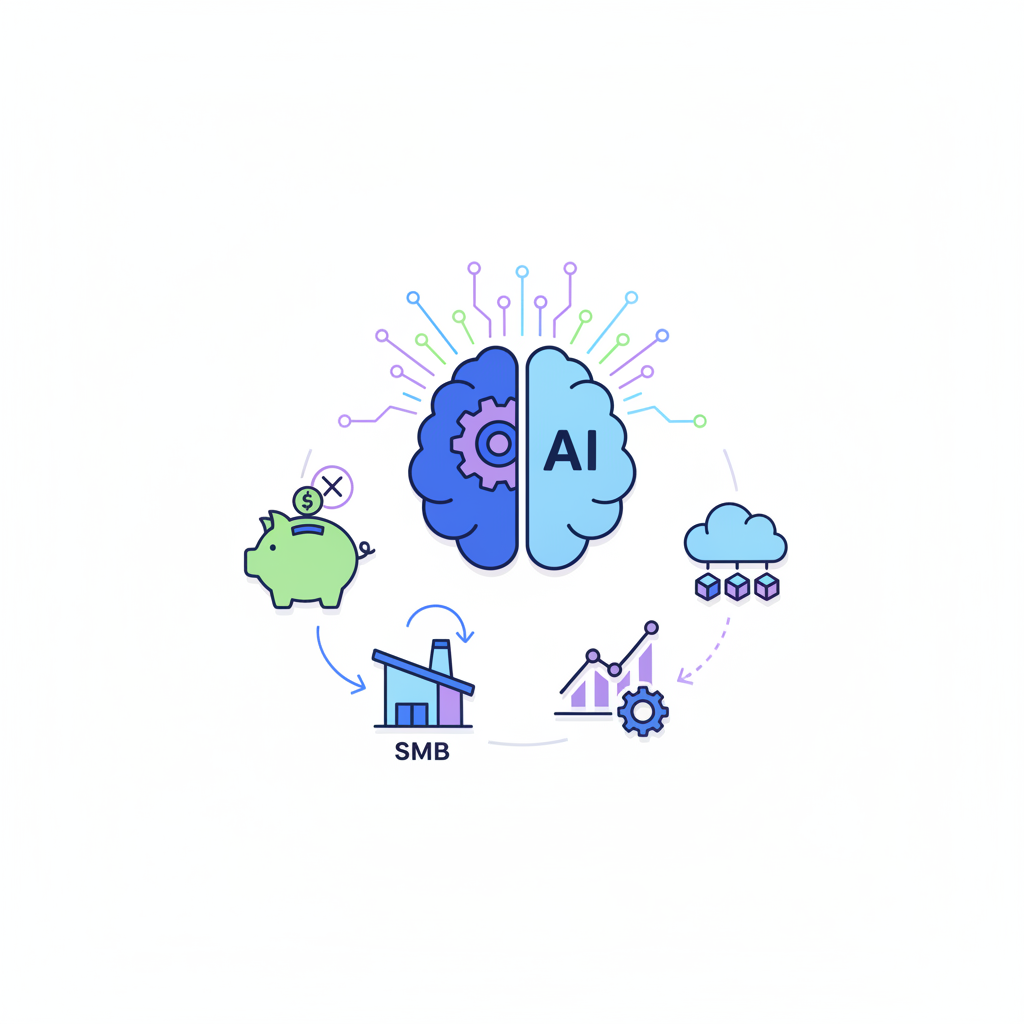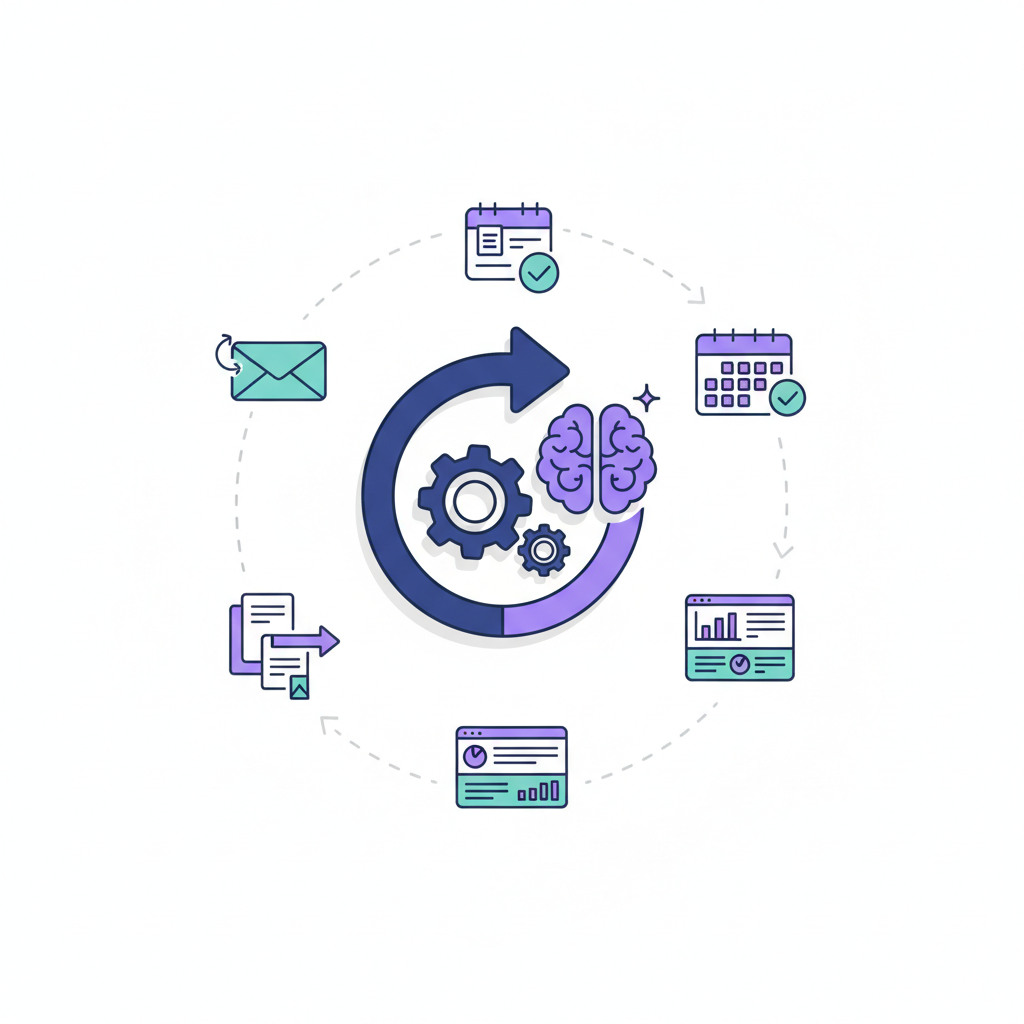How Governments Around the World Are Regulating AI?
Explore global AI regulation trends in 2025, from the EU AI Act's risk-based framework to US deregulation, China's state control, and emerging laws in UK, Canada, Singapore, and Japan. Understand challenges, comparisons, and future international cooperation.
The Global Race to Govern AI: Why Regulation is Imperative
The unprecedented rise of Artificial Intelligence has ushered in a new era of technological advancement, transforming industries, economies, and societies at an astonishing pace. From revolutionizing healthcare and finance to reshaping communication and defense, AI's transformative impact is undeniable. However, this rapid evolution also presents complex challenges, creating an urgent need for governments to establish robust frameworks for regulating AI. Without clear guidelines, the potential for misuse, unintended consequences, and ethical dilemmas looms large. It's crucial to distinguish between AI being regulated by governments – the focus of this article – and the often-misconceived notion of AI governing countries, which remains firmly in the realm of science fiction. This article will explore the diverse global AI regulation approaches being adopted worldwide, delve into the key challenges faced by policymakers, and anticipate future trends in AI policy and AI governance. Ultimately, governments worldwide are grappling with complex questions to ensure AI development is safe, ethical, and beneficial for all, striving to answer the critical question of how governments regulate AI effectively.
Driving Forces Behind Global AI Regulation: Ethics, Economy, and Security
The impetus behind the global push for AI regulation stems from a multifaceted array of concerns, spanning ethical imperatives, economic considerations, and national security interests. Each of these pillars contributes significantly to the shape and scope of emerging AI policy and AI governance frameworks.
Ethical imperatives form a foundational layer of concern. As AI systems become more sophisticated and integrated into daily life, issues around bias, discrimination, privacy violations, and the erosion of human rights have come to the forefront. AI algorithms, if not carefully designed and monitored, can perpetuate and even amplify existing societal biases, leading to unfair outcomes in areas like employment, credit, and criminal justice. The collection and processing of vast amounts of personal data by AI systems raise significant privacy concerns, demanding robust protections. Ensuring Ethical AI development means embedding principles of fairness, transparency, and accountability into the very core of these technologies, making an AI legal framework essential to address these profound societal impacts.
Economically, governments are walking a tightrope, aiming to balance the immense potential for innovation and competition that AI offers with concerns about market fairness and potential job displacement. While AI promises to boost productivity and create new industries, it also poses questions about the future of work and the need for reskilling initiatives. Regulations must be crafted to foster a vibrant AI ecosystem without stifling innovation through overly burdensome rules, while simultaneously preventing monopolistic practices and ensuring equitable distribution of AI's economic benefits. AI risk categorization plays a role here, helping to differentiate between low-risk applications that can flourish with minimal oversight and high-risk ones requiring stricter AI legislation.
National security and geopolitical stability represent another critical driving force. AI's application in defense, surveillance, and critical infrastructure protection raises profound questions about autonomous weapons systems, cyber warfare, and the potential for state-sponsored disinformation campaigns. Governments are keen to regulate AI in these sensitive sectors to prevent misuse, maintain strategic advantage, and ensure international stability. The dual-use nature of many AI technologies necessitates careful consideration in AI policy to prevent their weaponization while promoting beneficial applications.
Finally, societal values and public trust significantly shape regulatory priorities. Different cultural and political philosophies lead to varied approaches to AI governance. Societies that prioritize individual privacy might adopt stricter data protection laws, while others might emphasize state control or economic growth. Instilling public confidence in AI technologies is paramount for their widespread adoption and acceptance. A well-defined AI legal framework is crucial not only for guiding responsible development but also for building and maintaining this essential public trust, ensuring that AI serves humanity's best interests.
Regional Approaches to AI Regulation: A Deep Dive into Key Frameworks
The global landscape of AI regulation is characterized by a mosaic of diverse approaches, reflecting varying national priorities, legal traditions, and technological ecosystems. While some jurisdictions are moving towards comprehensive AI legislation, others prefer sectoral or principles-based guidance.
The European Union: Pioneering a Risk-Based Approach
The European Union has emerged as a global frontrunner in regulating AI with its groundbreaking EU AI Act. This landmark legislation, which entered into force in August 2024 and is now in the midst of a staggered implementation timeline, is the world's first comprehensive AI law around the world with a broad territorial scope AI impact. The Act's core is a risk-based approach, categorizing AI systems based on their potential to cause harm. It provides a clear definition of AI and identifies specific high-risk AI systems that are subject to stringent requirements. These include AI used in critical infrastructure, education, employment, law enforcement, migration, and democratic processes.
The Act prohibits certain AI practices deemed to pose an unacceptable risk to fundamental rights, such as real-time biometric identification in public spaces by law enforcement (with narrow exceptions) and social scoring systems. For high-risk applications, the requirements are extensive: they must undergo conformity assessments, adhere to strict data governance and quality standards, provide human oversight capabilities, ensure robustness and accuracy, and maintain comprehensive documentation and logging. Providers and deployers of AI systems have distinct AI compliance roles and responsibilities. The Act also outlines robust AI enforcement mechanisms, with significant penalties for non-compliance, potentially reaching tens of millions of euros or a percentage of global annual turnover. The EU's approach is deeply rooted in its commitment to fundamental rights, safety, and consumer protection, aiming to foster trustworthy AI. As of November 2025, discussions are ongoing regarding potential amendments to certain provisions amid global pressures, with a public consultation planned by year-end.
The United States: Sectoral and State-Level Initiatives
In stark contrast to the EU's comprehensive framework, the United States has not yet adopted a single federal AI law around the world. Instead, US AI regulation relies on a patchwork of existing laws, executive actions, and voluntary industry standards. The federal government's approach emphasizes fostering innovation, promoting competition, and leveraging existing regulatory bodies. A significant development was President Trump's Executive Order for Removing Barriers to American Leadership in AI in January 2025, which rescinded previous orders and focused on enhancing U.S. global AI dominance through deregulation.
The National Institute of Standards and Technology (NIST) AI Risk Management Framework (RMF) remains a key component of US AI regulation. This voluntary, principles-based framework provides guidance for organizations to manage the risks associated with designing, developing, deploying, and using AI systems. While not legally binding, it serves as a widely recognized standard for AI governance. Furthermore, sectoral scope AI regulations play a crucial role, with existing laws in areas like healthcare (HIPAA), finance (Fair Credit Reporting Act), and consumer protection (FTC Act) being applied to AI technologies. State-level privacy laws, such as the California Consumer Privacy Act (CCPA) and California Privacy Rights Act (CPRA), also indirectly impact AI development and deployment by governing data collection and usage. In 2025, states like Colorado enacted the Colorado AI Act for high-risk systems in employment and consumer contexts. The US approach prioritizes flexibility, allowing for rapid technological advancement while addressing specific harms through targeted interventions.
Asia-Pacific: Diverse Strategies from China to Singapore
The Asia-Pacific region showcases a diverse spectrum of Generative AI regulation approaches and broader AI policy. China has adopted a comprehensive and rapidly evolving regulatory landscape, characterized by a strong focus on state control, data security, and societal stability. Its framework includes the Cybersecurity Law, Data Security Law, and Personal Information Protection Law, which collectively govern data handling by AI systems. More specifically, China has introduced regulations on algorithmic recommendation services and, notably, specific rules for Generative AI regulation approaches, requiring providers to ensure accuracy, prevent discrimination, and adhere to socialist core values. In July 2025, China announced its Action Plan for Global Artificial Intelligence Governance, emphasizing international cooperation and proposing a global AI organization. The emphasis is on ensuring AI serves national interests and maintains social order.
Singapore, on the other hand, has positioned itself as a hub for responsible AI innovation. Its Model AI Governance Framework is a voluntary, adaptable framework designed to help organizations deploy AI responsibly. It focuses on principles of explainability, fairness, and accountability, providing practical guidance rather than prescriptive rules. In February 2025, Singapore announced new AI safety initiatives, including the Global AI Assurance Pilot for testing generative AI applications. Singapore also actively participates in international initiatives to shape global AI standards. Japan has adopted a human-centric approach to AI policy, emphasizing ethical guidelines, international collaboration, and the promotion of AI for societal benefit, as outlined in its Human-Centric AI Principles. In February 2025, Japan's Cabinet approved the AI Bill, the country's first AI-specific statute, focusing on a soft-law, innovation-oriented framework.
Other Key Players: UK and Canada
The United Kingdom has opted for a pro-innovation approach, outlined in its AI White Paper. Rather than creating a new, overarching AI law around the world, the UK intends to empower existing regulators (e.g., ICO, CMA, FCA) to interpret and apply five core principles (safety, security, transparency, fairness, accountability, and redress) within their respective sectors. This sectoral scope AI strategy aims to be agile and adaptable, fostering innovation while addressing specific risks. In January 2025, the UK launched its AI Opportunities Action Plan, focusing on economic growth and AI adoption. The Artificial Intelligence (Regulation) Bill was reintroduced in March 2025, proposing an AI Authority, but planned legislation has been delayed until summer 2026.
Canada is advancing its AI and Data Act (AIDA), introduced as part of Bill C-27. However, the bill was halted in January 2025 due to prorogation of Parliament, leaving AIDA's future uncertain ahead of the federal election by October 2025. AIDA focuses on high-impact AI systems, requiring organizations to assess and mitigate risks, establish governance measures, and ensure transparency. It aims to balance responsible innovation with protecting Canadians from potential harms, establishing a framework for AI governance that is both forward-looking and practical. These laws directly regulating AI demonstrate a growing commitment to structured oversight.
Comparative Analysis: Similarities, Differences, and Global Impact
The varied global AI regulation landscape, while diverse, reveals both common threads and distinct divergences in how AI laws around the world are being shaped. Understanding these nuances is crucial for businesses, developers, and policymakers navigating the evolving AI legal framework.
While a detailed table comparing every aspect across all jurisdictions is extensive, we can highlight key regulatory aspects:
| Aspect | EU AI Act | US Approach | China AI Regulation | UK AI Regulation | Canada AI and Data Act (AIDA) |
|---|---|---|---|---|---|
| Definition of AI | Broad, technology-neutral, based on specific characteristics | No single legal definition; varies by context/EO | Broad, includes algorithms, data, and models | Principles-based, adaptable | Focus on "high-impact" AI systems |
| High-Risk Categorization | Explicitly defined list of high-risk uses | Sector-specific, NIST RMF for voluntary risk mgmt | Sectoral, specific rules for certain applications | Principles applied by existing regulators | Focus on "high-impact" AI systems |
| Enforcement Body | National supervisory authorities, AI Office | Sectoral regulators (FTC, FDA, etc.) | Cyberspace Administration of China (CAC), etc. | Existing sectoral regulators (ICO, CMA) | Minister of Innovation, Science and Industry |
| Penalties | Significant fines (up to €35M or 7% global turnover) | Varies by existing law (e.g., FTC fines) | Significant fines, administrative sanctions | Varies by existing regulator's powers | Significant fines (up to C$25M or 5% global turnover) |
| Key Regulatory Philosophy | Rights-based, risk-averse, consumer protection | Innovation-focused, voluntary standards, sectoral | State control, societal stability, data security | Pro-innovation, agile, existing regulatory powers | Responsible innovation, harm mitigation |
Despite these differences, several similarities emerge across global AI regulation. There's a common call for greater transparency in AI systems, demanding that users understand when they are interacting with AI and how decisions are made. Accountability is another shared principle, ensuring that there are clear lines of responsibility for AI-related harms. Human oversight, particularly for critical applications, is also a recurring theme, emphasizing the need for human control over autonomous systems. These common threads highlight a global consensus on the fundamental need for Ethical AI and responsible development.
However, the differences are pronounced. The EU's prescriptive, risk-averse approach contrasts sharply with the US's more innovation-focused, principles-based, and sectoral strategy. China's emphasis on state control and data sovereignty differs from the more liberal, rights-focused frameworks in Western democracies. This divergence creates significant challenges for businesses and developers operating internationally. Navigating fragmented jurisdictions worldwide AI regulation necessitates a deep understanding of local laws, leading to increased AI compliance burdens and potential market access challenges. The concept of Territorial scope AI means that companies must adhere to the regulations of every jurisdiction where their AI systems are deployed or impact citizens, even if the development occurs elsewhere. This complexity underscores the need for a global AI regulatory tracker to keep pace with the evolving landscape and ensure adherence to diverse AI legal framework requirements.
Challenges in Regulating Rapidly Evolving AI Technology
Regulating AI presents a unique set of challenges that often outpace traditional legislative processes. The very nature of AI – its rapid evolution, complexity, and pervasive impact – makes it particularly difficult for AI regulators to craft effective and future-proof AI policy.
One of the most significant hurdles is the pace of innovation versus regulatory lag. AI technology, especially areas like Generative AI, is advancing at an exponential rate. New models and capabilities emerge almost daily, often before policymakers have fully grasped the implications of existing technologies. This creates a constant struggle for AI regulators to keep up, leading to regulations that can quickly become outdated or irrelevant. Crafting AI legal framework that remains pertinent in such a dynamic environment requires foresight and adaptability, which are often difficult to achieve within traditional legislative cycles.
Another fundamental challenge lies in defining AI and its scope. The term "AI" itself is broad and encompasses a wide array of technologies, from simple rule-based systems to complex neural networks. Creating future-proof definitions that accurately encompass diverse and evolving AI systems, without inadvertently stifling innovation or creating loopholes, is an ongoing struggle. Should a calculator be considered AI? What about advanced statistical models? The AI definition used in legislation has profound implications for what systems fall under regulatory scrutiny, impacting sectoral scope AI and compliance requirements.
Cross-border enforceability and jurisdiction add another layer of complexity. AI systems often operate globally, processing data and impacting users across multiple national borders. This raises intricate questions about which country's laws apply when an AI system developed in one nation, hosted in another, and used by citizens in a third, causes harm. The complexities of applying national laws to AI systems that operate globally necessitate international cooperation, yet achieving consensus on AI enforcement across diverse legal systems is notoriously difficult.
Furthermore, resource constraints pose a substantial challenge. Effective AI enforcement and oversight require specialized expertise in AI technology, law, ethics, and economics. Many regulatory bodies lack the necessary funding, technical infrastructure, and skilled personnel to adequately monitor, assess, and enforce AI legislation. Building this capacity is a long-term investment that many governments are only just beginning to make.
Finally, there is the delicate act of balancing innovation and safety. Overly restrictive AI policy could stifle the very innovation that drives economic growth and societal progress. Conversely, a lack of regulation could lead to significant ethical breaches, safety failures, and a loss of public trust. Finding the sweet spot – fostering technological advancement without compromising ethical standards or public safety – is perhaps the most profound challenge facing AI regulators today.
The Path Forward: International Cooperation and Future Trends in AI Governance
As governments grapple with the complexities of regulating AI, the path forward increasingly points towards enhanced international cooperation and the development of adaptive AI governance models. The global nature of AI demands a coordinated response, moving beyond fragmented national efforts towards more harmonized global AI regulation.
Harmonization efforts are already underway through various international organizations. Bodies like the Organisation for Economic Co-operation and Development (OECD), the G7, and the United Nations are actively working to foster common principles and standards for global AI regulation. The OECD's AI Principles, for instance, provide a widely recognized framework for responsible AI, emphasizing inclusive growth, human-centered values, transparency, and accountability. These initiatives aim to create a shared understanding of best practices and to lay the groundwork for more consistent AI policy across borders.
Bilateral and multilateral agreements are also playing a crucial role in sharing best practices and coordinating regulatory approaches between nations. These agreements can facilitate information exchange, joint research, and even mutual recognition of AI compliance standards, reducing the burden on businesses operating in multiple jurisdictions. Such collaborations are vital for addressing issues like territorial scope AI and ensuring effective AI enforcement across borders.
Looking ahead, emerging areas of concern will undoubtedly shape the future AI policy. As AI capabilities advance, policymakers are already anticipating regulatory needs for increasingly sophisticated applications. This includes addressing the ethical and societal implications of deepfakes, the control and accountability of autonomous weapons systems, and the profound questions raised by brain-computer interfaces. Generative AI regulation approaches are already being developed, but the next wave of AI will demand even more proactive and adaptive regulatory frameworks.
The future of AI laws around the world is likely to involve a blend of approaches. We can expect to see a continued evolution towards adaptive governance models that are flexible enough to respond to rapid technological change. This might include "regulatory sandboxes" that allow for controlled experimentation, or "agile regulation" that can be updated more frequently than traditional laws. The push for international AI standards, potentially developed through multi-stakeholder processes involving governments, industry, academia, and civil society, will also gain momentum.
For organizations navigating this diverse regulatory landscape, several recommendations stand out. Proactive AI compliance is paramount; businesses must not wait for explicit AI legislation but should instead adopt ethical AI principles and robust governance frameworks now. This includes conducting regular AI risk assessments, ensuring transparency in AI decision-making, and investing in explainable AI solutions. Embracing ethical AI development is not just a regulatory requirement but a strategic imperative for building trust with customers and stakeholders. By actively participating in the dialogue around how governments regulate AI, organizations can help shape the future of AI governance, ensuring it fosters innovation while safeguarding societal values.
Navigating the Complexities of Global AI Governance
The journey to effectively govern Artificial Intelligence is a complex and ongoing endeavor, marked by both significant progress and persistent challenges. As we've explored, the landscape of AI regulation is incredibly diverse, with regions like the European Union pioneering comprehensive, risk-based AI legislation, while the United States opts for a more sectoral and principles-based approach. Asia-Pacific nations, from China's state-centric control to Singapore's voluntary frameworks, further highlight this global divergence. Despite these regional differences, there's a shared recognition of the imperative for AI governance to address ethical concerns, economic impacts, and national security risks.
The necessity of robust AI governance cannot be overstated. It is the critical mechanism through which societies can harness AI's immense benefits – from scientific breakthroughs to economic prosperity – while simultaneously mitigating its profound risks, such as bias, privacy infringements, and autonomous harms. The challenges of regulatory lag, defining AI's scope, cross-border enforceability, and resource constraints underscore the difficulty of this task, particularly with the rapid evolution of technologies like Generative AI.
Looking ahead, the future outlook for global AI regulation points towards an ongoing journey of adaptation and collaboration. Increased international cooperation, harmonization efforts through multilateral organizations, and the development of agile governance models will be crucial in shaping more effective and coherent AI laws around the world. This collective effort is essential to create a predictable and trustworthy environment for AI development and deployment.
Ultimately, navigating these complexities requires continued dialogue, collaboration, and responsible innovation from all stakeholders. Governments must remain adaptable, industry must prioritize ethical development and AI compliance, and civil society must advocate for human-centric AI. Only through such concerted efforts can we ensure that regulating AI leads to a future where artificial intelligence serves as a force for good, enhancing human well-being and societal progress.
Frequently Asked Questions About AI Regulation
Q1: What is the EU AI Act and why is it significant?
A: The EU AI Act is the world's first comprehensive AI legislation that categorizes AI systems by risk level. It's significant because it sets a global precedent for AI regulation, imposing strict requirements on "high-risk" AI systems and prohibiting certain uses, aiming to ensure AI is safe, ethical, and respects fundamental rights.
Q2: How do US and EU approaches to AI regulation differ?
A: The EU takes a prescriptive, risk-based approach with a single, overarching AI law around the world (the EU AI Act). The US, conversely, favors a more innovation-focused, sectoral approach, relying on existing laws, executive orders, and voluntary frameworks like the NIST AI Risk Management Framework, without a single federal AI policy.
Q3: What are the main challenges governments face in regulating AI?
A: Governments face challenges including the rapid pace of AI innovation (regulatory lag), defining AI's scope, ensuring cross-border enforceability, resource constraints for AI enforcement, and balancing innovation with safety. Generative AI regulation approaches are particularly challenging due to their rapid evolution.
Q4: Are there any global standards for AI governance?
A: While there isn't a single legally binding global AI governance standard, organizations like the OECD, G7, and UN are working on common principles and guidelines. The OECD AI Principles are widely recognized, fostering international AI standards and encouraging global AI regulation harmonization.
Q5: How does Generative AI regulation approaches fit into existing frameworks?
A: Generative AI regulation approaches are being integrated into existing and emerging frameworks. For example, China has specific rules for generative AI, while the EU AI Act includes provisions that apply to general-purpose AI models, including generative AI, requiring transparency and risk mitigation measures. Many AI policy discussions are now specifically addressing the unique risks of generative AI.
Featured Tools

10Web is an AI-powered WordPress platform that offers automated website building, hosting, and optimization with AI assistance for content and image generation.

An AI-powered assistant that helps users manage and organize their digital information, turning raw data into structured insights.

A global creative platform connecting businesses with freelance designers for custom graphic design projects.

A1.art is an AI art generator that transforms text descriptions into unique digital artworks across various styles.

An AI platform that automates the entire lifecycle of building, deploying, and monitoring custom AI models.
Top AI Categories
Related Articles

AI for financial services: compliance & automation
Discover how AI is revolutionizing financial services through advanced compliance automation, real-time fraud detection, regulatory reporting, and hyper-personalized customer experiences. Explore the future of intelligent, efficient, and secure banking.

How SMBs can adopt AI without big spending
Discover how small and medium businesses can adopt AI affordably. This practical guide covers low-cost tools, quick wins, real-world examples, and step-by-step strategies to integrate AI without breaking the bank.

Top 10 AI tools for Enterprise Workflow Automation
Enterprises are turning to AI-powered workflow automation to eliminate manual processes, cut costs, and accelerate strategic execution. Unlike traditional automation, AI can handle unstructured data and make intelligent decisions, offering profound benefits across finance, HR, and IT. This guide curates the top 10 AI tools—from RPA leaders like UiPath and Automation Anywhere to iPaaS solutions like Workato and low-code platforms like Microsoft Power Automate—providing a blueprint for building a more agile and resilient organization.